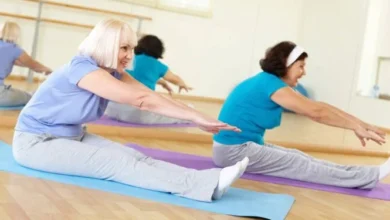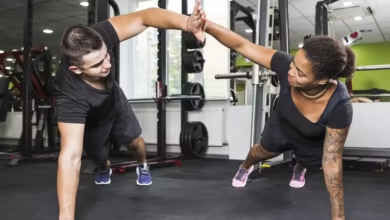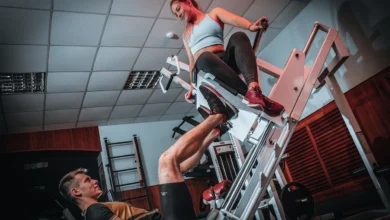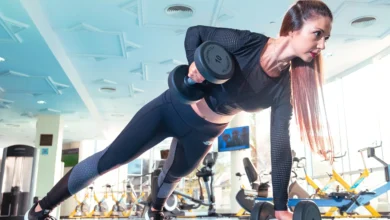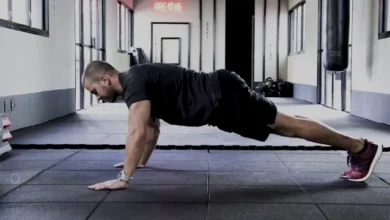The Key to Strong and Healthy Shoulders: Shoulder Development Without Error Goes Beyond the Deltoid
Shoulder Development Without Error
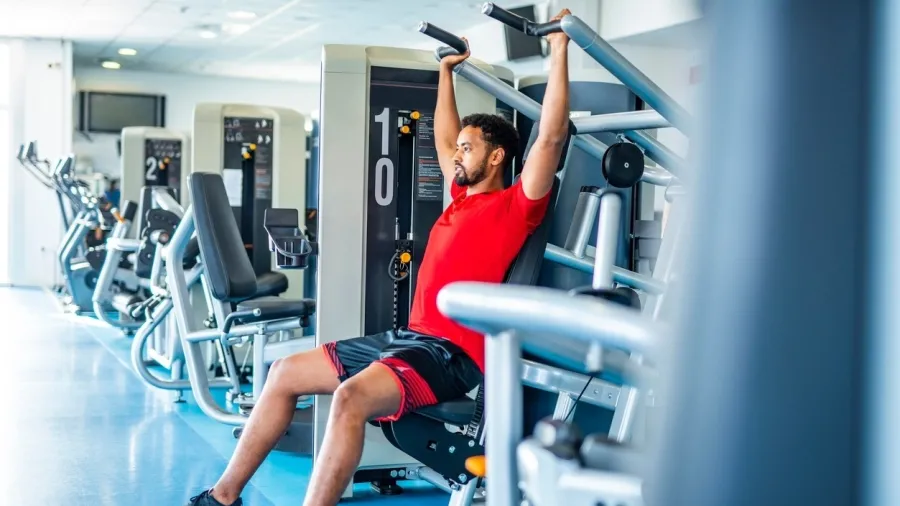
Many people dedicate hours at the gym aiming to build broad and well-defined shoulders, intensely focusing on the deltoid (the most visible part of the shoulder). However, the true development and, crucially, the longevity of the shoulders, depend on a much less apparent but infinitely more important muscle group: the Rotator Cuff.
The shoulder is the most mobile joint in the human body, which makes it simultaneously versatile and vulnerable. An effective approach to Shoulder Development Without Error requires a shift in focus: moving away from mere aesthetics to prioritizing stability, mobility, and injury prevention. If your workout does not include strengthening the stabilizing muscles, the risk of chronic problems, such as tendinitis and impingement, increases drastically.
In this guide, we explore the functional anatomy of the shoulder, the most common mistakes in classic exercises (like the overhead press), and present a training plan that ensures not only the aesthetic growth of the deltoid but also the joint’s protection against wear and tear.
READ ALSO:
- Does Running Help You Lose Weight? How to Start and Progress Without Losing Your Breath
- Mika Takishima Method: 4 Transformative Exercises for Weight Loss and Healthy Aging
Follow our PAGE
The Anatomy of the Shoulder and the Role of the Rotator Cuff
To train the shoulder without error, it is fundamental to understand its structure. The shoulder is a ball-and-socket joint (head of the humerus and glenoid cavity), supported by two major muscle groups: the Deltoids (the large, rounded muscle) and the Rotator Cuff (the group of four small stabilizing muscles).
The Rotator Cuff: The Guardians of the Shoulder
The rotator cuff is composed of the Supraspinatus, Infraspinatus, Teres Minor, and Subscapularis muscles. Their main function is not to lift heavy weight, but to keep the head of the humerus firmly centered in the glenoid cavity during all arm movements.
The Imbalance Problem: Traditional training tends to overload the deltoids (especially the anterior portion) and neglect the small rotator cuff muscles. This imbalance leads to an unstable joint, where the stronger deltoids “pull” the joint out of center, causing friction and injury to the cuff and surrounding tendons. Visible muscle development becomes a burden instead of a source of strength.
Common Mistakes in Shoulder Development Without Error
The shoulder press exercise (whether military, dumbbell press, or front/behind the neck) is crucial for deltoid hypertrophy, but it is also the source of most injuries if executed incorrectly.
Mistake 1: Excessive Weight and Lack of Control
Many people use more weight than they can control, which leads to compensatory movements, such as arching the back (lumbar hyperlordosis) to help lift the load.
The Lumbar Risk: Arching the back puts undue pressure on the lower spine. Furthermore, lack of control at the top of the movement can cause impingement of the rotator cuff tendons. For Shoulder Development Without Error, the rule is: prioritize control and the speed of the eccentric phase (lowering) over maximum load.
Mistake 2: Incorrect Elbow Position
During the dumbbell press, the most common mistake is letting the elbows “drop” behind the line of the body.
The Danger of Internal Rotation: This position forces the shoulder into excessive internal rotation and can lead to the compression of the supraspinatus tendon in the subacromial space (impingement). The ideal is to keep the elbows slightly in front of the body (in a 30 to 45-degree diagonal line) and the wrists aligned.
The Training Strategy for Shoulder Development Without Error
An effective shoulder training plan is divided into three crucial phases: stabilization, hypertrophy, and flexibility.
Phase 1: Rotator Cuff Stabilization and Activation
These exercises should be done at the beginning of the workout as a warm-up, or as accessory exercises on rest days, using very light loads (resistance bands or 1-2 kg dumbbells).
- External Rotation with Cable/Resistance Band: Strengthens the infraspinatus and teres minor. It is the most important movement to counterbalance the internal rotation we do in almost all daily activities.
- Lateral Raise in the Y Position: Strengthens the supraspinatus. It should be done with the thumb pointing up (instead of down) to avoid tendon impingement.
Phase 2: Deltoid Hypertrophy with Safety
Once the rotator cuff is activated and the joint is stabilized, you can focus on deltoid hypertrophy.
- Seated Military Press (Frontal): Prioritize the seated version to isolate the lumbar spine and force Core stability. Keep the bar or dumbbells in front of the body’s plane.
- Controlled Lateral Raise: This is the best exercise for the lateral head of the deltoid (which gives the appearance of width). Perform the movement slowly and controlled, avoiding lifting above the shoulder line (90 degrees) to protect the cuff.
Phase 3: Mobility and Decompression
These final exercises help to “open” the shoulder and restore its natural resting position.
- Wall Slides: Improves scapular mobility and the flexibility of the chest muscles, which tend to be tight and “pull” the shoulders forward.
- Codman’s Pendulum: Using a light weight, let the arm hang and make small circles. This passive movement helps decompress the joint and is great for recovery.
Conclusion
Shoulder Development Without Error demands a change in perspective: from building the largest visible muscle to building the most stable and long-lasting joint. The true breakthrough in shoulder hypertrophy and strength will come when the Rotator Cuff is strong enough to allow the Deltoids to work at their maximum capacity and safely. By integrating Rotator Cuff stabilization exercises, mastering the correct pressing technique, and including mobility routines, you will not only be developing aesthetically impressive shoulders but ensuring that your ability to lift, push, and pull lasts a lifetime.

Hello! My name is Alan Teixeira and I am passionate about helping people live healthier, more balanced lives. From mindful eating to daily habits that promote physical and mental well-being, I believe that small, consistent changes can lead to powerful transformations.
I created this blog to share practical tips, reliable information, and thoughtful insights that can inspire you to take better care of yourself—with balance, mindfulness, and positivity.
If you are looking to improve your health, nourish your body, and build a lighter, more fulfilling routine, you are in the right place. Welcome!

